

To the east of Grand Concourse are three parallel avenues honoring Civil War generals Sheridan, Sherman, and Grant. The last one accepted the surrender of the largest Confederate army and later served as the 18th president. Ulysses Grant’s connections to New York endure in death: his life ended in an Adirondack cottage and his body was entombed in Morningside Heights. An equestrian monument and an avenue in Brooklyn, and Grant City on Staten Island also honor him. In the Bronx, Grant’s name appears on an avenue and a park that was expanded in 2025 to cover the length of a block.

Before visiting Grant Park, I walked the length of Grant Avenue to document its variety of architecture as the Bronx became urban, then suffered from abandonment, followed by the post-millennial revival.
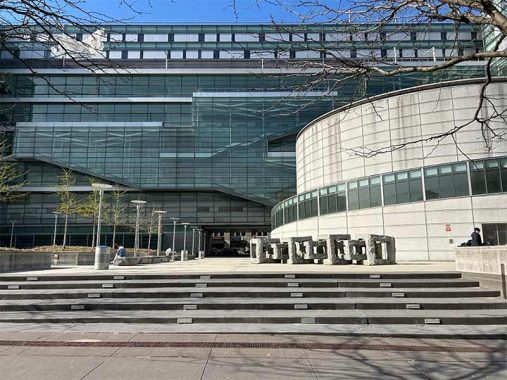
Grant Avenue had its start at E. 161st Street, which appears on the subway map as the station for Yankee Stadium. As the youngest county in the state, the Bronx never had a civic center akin to St. George for Staten Island, or Brooklyn’s Cadman Plaza. The placement of its government buildings on 161st Street gives Concourse Village the same purpose as a district of courthouses and administrative offices. The most recent of these is the Bronx County Hall of Justice, a postmodern design by famed architect Rafael Vinoly completed in 2008.
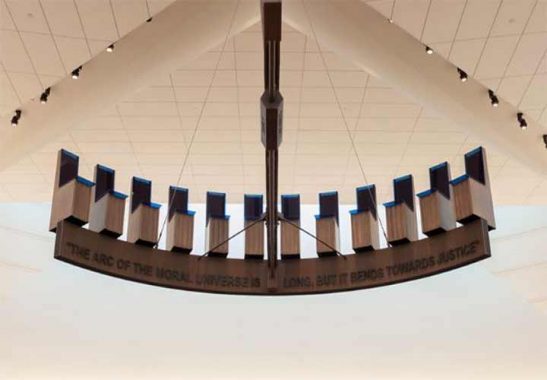
Ahead of its construction, the first block of Grant Avenue was demapped but its visual corridor was preserved as a public plaza. On account of the Percent for Art law, the building’s interior has the Equilibrium sculpture by Michael Davis (shown here) inside one of its 47 courtrooms, and One Stone, a pattern carved from stone by Cai Guo-Qiang.
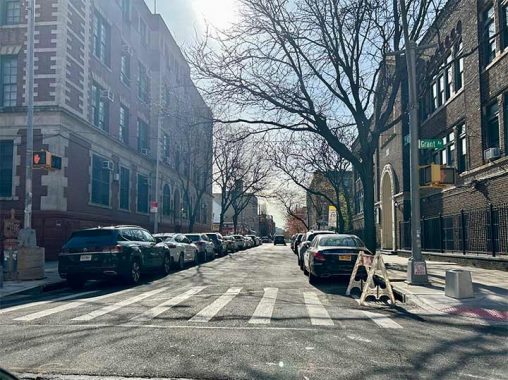
The back of Saint Angela Merici Catholic church faces Grant Avenue. Its namesake is a Renaissance period nun who promoted Catholic education and founded the Angelines order. Across E. 163rd Street is PS 35 Franz Sigel School, designed by the prolific superintendent CBJ Snyder. The school’s namesake also appears on a nearby park and a monument in Riverside Park. Having failed at a republican revolution in 1848 in Germany, he emigrated and led Union troops in the Civil War, and later worked as a newspaper publisher. He lived and died in the Bronx, with his remains interred at Woodlawn Cemetery.
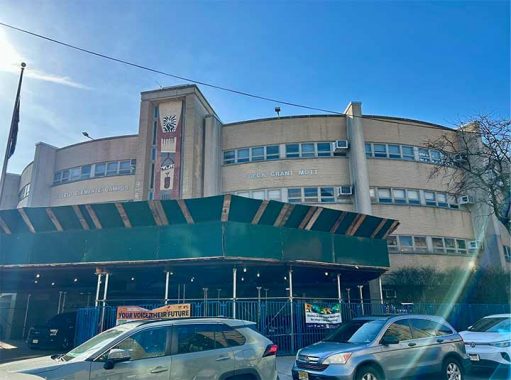
Snyder’s school shares the block with the former IS 166 Roberto Clemente School, a modernist facility completed in 1972, the year when its namesake baseball star was killed in a plane crash en route to a humanitarian mission. The mosaic art on the building speaks of his birthplace Puerto Rico, as the Bronx has a sizable population of people from this island. Failing grades resulted in the closing of IS 166 in 2011. The building is presently used by three smaller public schools. Their names appear on the facade as Beca Grant Mott. Sounds like a person as it names its present occupants, Bronx Early College Academy, Grant Avenue Elementary School, and The Mott Hall School.
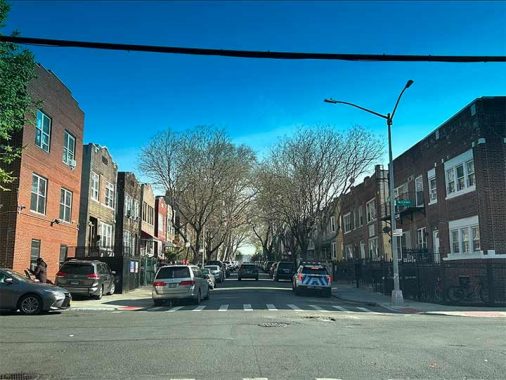
McClellan Street crosses Grant between 166th and 167th Streets. Its namesake was also a Civil War general who fought at Gettysburg but then ran against Lincoln in the 1864 election and later served as governor of New Jersey. His son George McClellan Jr served as a New York congressman and mayor.
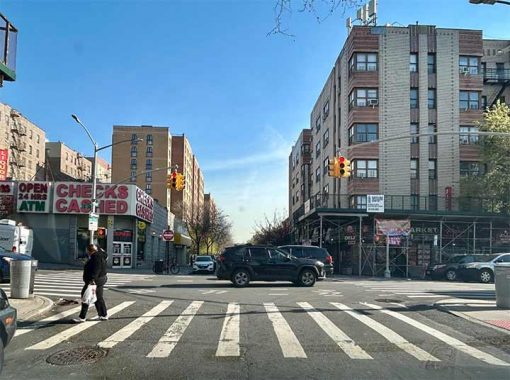
At 167th Street, the art deco style appears on the apartments, a style that is more prevalent on the nearby Grand Concourse with other examples throughout the borough. This Art Deco building from 1936 survived the wave of arson in the 1980s but the rest of this Morrisania block was devastated, resembling a postwar cityscape. At the turn of the millennium, life returned to this stretch of Grant Avenue. The even side received brick townhouses with cornices that resembled walk-ups from a century ago. On the odd side, two ten-story buildings made up for the six-story buildings lost to arsonists a generation earlier.
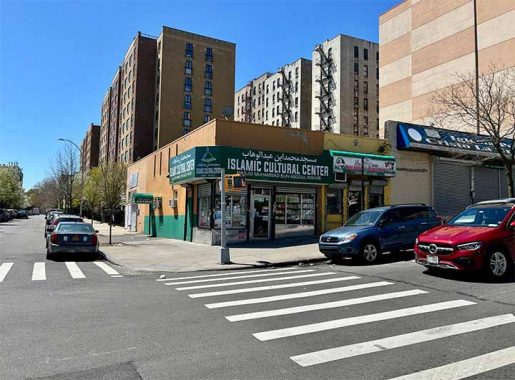
At 169th Street, a corner bodega became a storefront mosque following the influx of West African immigrants to this section of the Bronx. The mosque’s namesake, Muhammad bin Abdul Wahab, was a theologian who promoted a culture of religious learning, strict observance, and an austere lifestyle. One of his daughters married a Saud and Wahhabi teachings became the official Muslim theology of Saudi Arabia.
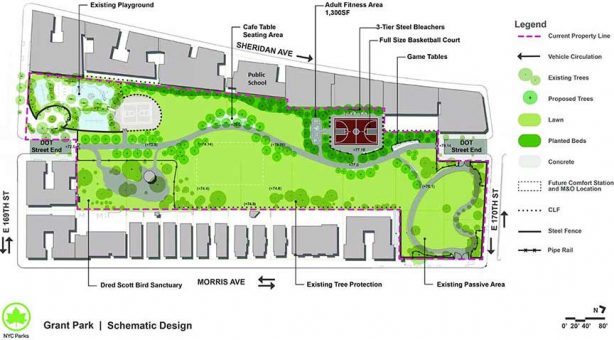
Grant Park began as a playground on the corner of 169th Street in 2006 and then expanded as a park on the adjoining lots as it reached its present size.
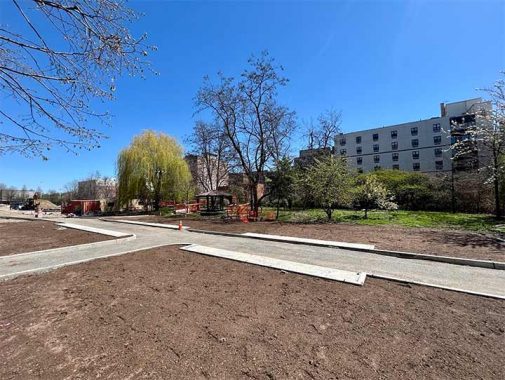
Across from the playground is the Dred Scott Bird Sanctuary. The plaintiff of the infamous 1857 fugitive slave case is one of the major points on the timeline of black history in America. The garden was created in 1996 from an abandoned lot by local resident Troy Lancaster after learning that the migratory bird route flew over the Bronx. It took him two years to clear the trash-covered lot.
“Dred Scott fought for his freedom despite all adversity,” his wife Patricia Grant told the New York Times. “He never gave up and he refused to accept what others said he was. We’re doing the same thing here. We refuse to accept the labels put on us by others who are not from our community.”
The Lancasters dreamed of the entire block redeveloped as a park. When parkland is taken away for other purposes, state law requires compensation in the form of land. With the new Yankee Stadium in Mullaly Park and a water filtration plant at Van Cortlandt Park built in the early 2000s, the empty lots on Grant Avenue were designated as parkland. With the park’s expansion, the path of Grant Avenue in front of the bird sanctuary was reduced to a footpath.
There was pushback over the loss of parking spots but political winds favored park expansion and this block closed to cars on October 30, 2023.
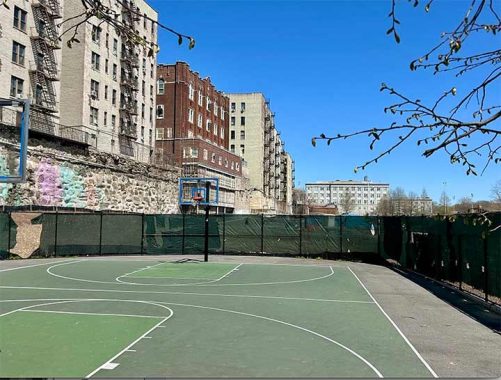
Among the beneficiaries of this expanded park are the students of PS 88 on Sheridan Avenue. The back of this Snyder-designed building faces the park. Known as the Little Sparrow School, it honors Sidney Silverstein, a Bronx-born builder who founded the Sparrow construction firm. With the demand for more housing, perhaps it is questionable why a new park was created within walking distance of the existing Claremont Park, but keeping in mind that there were two blocks on Grant Avenue devastated by arson, one became apartments and the other became a park in a compromise that provided high density residences and public space.
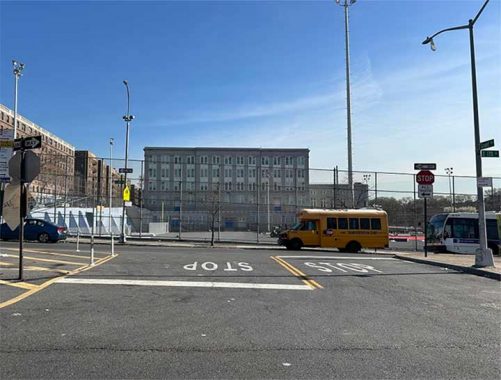
Grant Avenue ends at 170th St., where it faces the schoolyard of the former William Howard Taft High School. Named for the 27th president, it opened in 1941 and includes famous alumni such as Eydie Gorme, Stanley Kubrick, and Luther Vandross.
In its final four decades, attendance and grades at the school precipitously dropped, and the city closed the high school in 2008. The building was renamed William Howard Taft Educational Campus with smaller high schools placed inside it. The schoolyard is named for Jonathan Levin, son of a wealthy Time Warner chairman who chose a career in teaching at this high school. Tragically, he was killed by a former student in 1997.
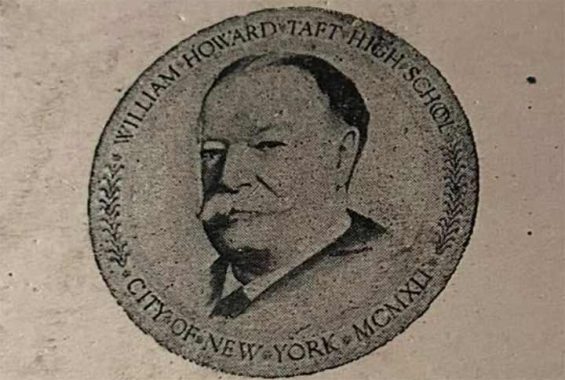
Concerning presidents, the city also had public high schools named for George Washington, John Adams, Thomas Jefferson, James Madison, James Monroe, Andrew Jackson, Martin Van Buren, Abraham Lincoln, Grover Cleveland, Theodore Roosevelt, Franklin D. Roosevelt, John F. Kennedy, and a junior high school for William McKinley.
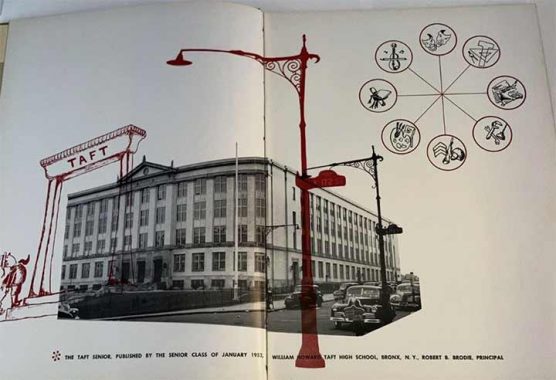
Presidential runner-ups Samuel J. Tilden, Alfred E. Smith, and Adlai E. Stevenson also appear on the map of city public high schools. The italicized names were closed for poor performance and their buildings now host smaller schools, while retaining their namesakes. In recognition of Kevin’s fascination with lamppost designs, here’s a photo from the 1952 Taft High School yearbook. Can you name the genus and species of these lights?
[Type G –ed.]
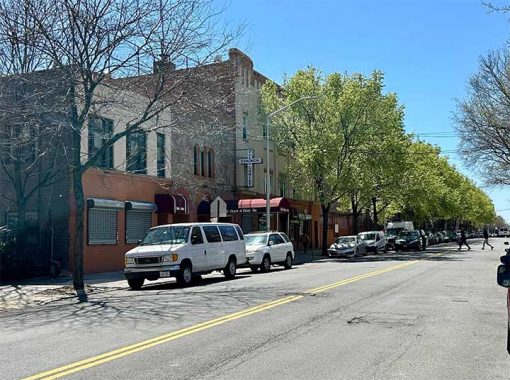
At 170th Street, the park’s footprint touches Morris Avenue where it faces across The Bible Church of Christ. With its Spanish architectural style, one could be mistaken in thinking that this building was designed for its present purpose. It was built as a synagogue and school in the 1920s. Congregation Zichron Moshe was renamed in 1944 in honor of local resident Moshe (Murray) Alexander Gross, 23, who was killed in combat on D-Day.

With migration to the suburbs, increase in crime and white flight, the Jewish community in Morrisania declined. Rabbi Yerucham and Chana Gorelick preserved the name Zichron Moshe as they moved to South Fallsburg in the Catskills, where the yeshiva continues today. The synagogue was sold in 1968 to businessman Elias Karmon, who then sold it to the church.
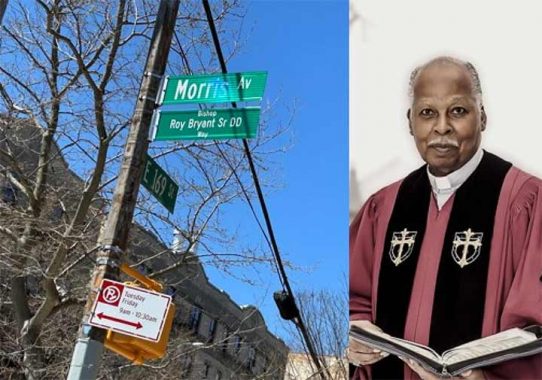
Its founding bishop Roy Bryant Sr. was honored with a co-naming on this block of Morris Avenue in 2021 for the church’s role in promoting faith, literacy, and charitable causes.
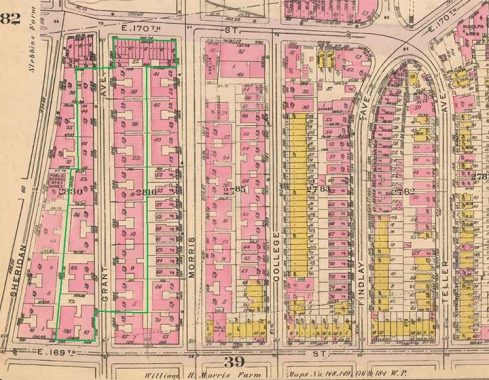
Looking back at the history of Grant Park in maps, the 1920s experienced the transformation of this block with six story apartments populated, largely by Jews, who moved uptown from the lower east side. Those who could not afford apartments on the Grand Concourse lived on the parallel streets, such as this one.
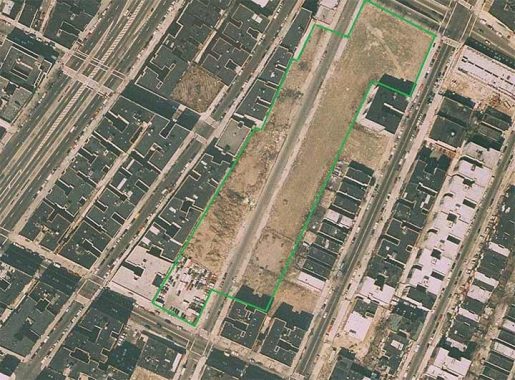
By the 1980s, some of the blocks on Grant Avenue resembled an urban prairie, similar to the story of Melrose Commons which I documented earlier.

The expansion of Grant Park transformed this block from a concrete canyon to a valley, restoring nature to this densely built neighborhood. When I visited Grant Park, its transformation wasn’t yet complete, giving me reason to return here when it is done.
You can learn more about the history of this neighborhood by visiting each of the hyperlinks posted in the essay above.
Sergey Kadinsky is the author of Hidden Waters of New York City: A History and Guide to 101 Forgotten Lakes, Ponds, Creeks, and Streams in the Five Boroughs (2016, Countryman Press), adjunct history professor at Touro University and the webmaster of Hidden Waters Blog.
Check out the ForgottenBook, take a look at the gift shop. As always, “comment…as you see fit.” I earn a small payment when you click on any ad on the site.
4/19/25


5 comments
The last part of this excellent posting brought back memories to both me and my wife. First, the photos of Taft High School, where my wife graduated in 1966. Second, the Bible Church of Christ building at 1358 Morris Ave. served as an annex to Morris High School, between 1969 and about 1974. I was on the Morris faculty between 1971 and 1974 and taught in that very building. Time flies!
A nitpick, but McClellan didn’t fight at Gettysburg. He was replaced in November of 1962, less then two months after the battle of Antietam, replaced by Ambrose Burnside, who in turn was replaced by Joe Hooker. By the time of Gettysburg, George Gordon Meade was in command, having been put in charge only a week before the battle.
Alec: You made one error; it was obviously a typo. McClellan was relieved of command in November of 1862, not 1962. November 1962 was the aftermath of the Cuban Missile Crisis, a different crisis altogether.
Webmaster: How did you, the master of obscure details, miss this hundred-year error?
The date is not on the page.
Thank you for this terrific piece Sergey! Like so many FNY articles, this was informative, interesting and a story very well told. Thank you for introducing me to this part of NYC (and USA), a place I never knew much about. I’m looking forward to the “after” report later this year.